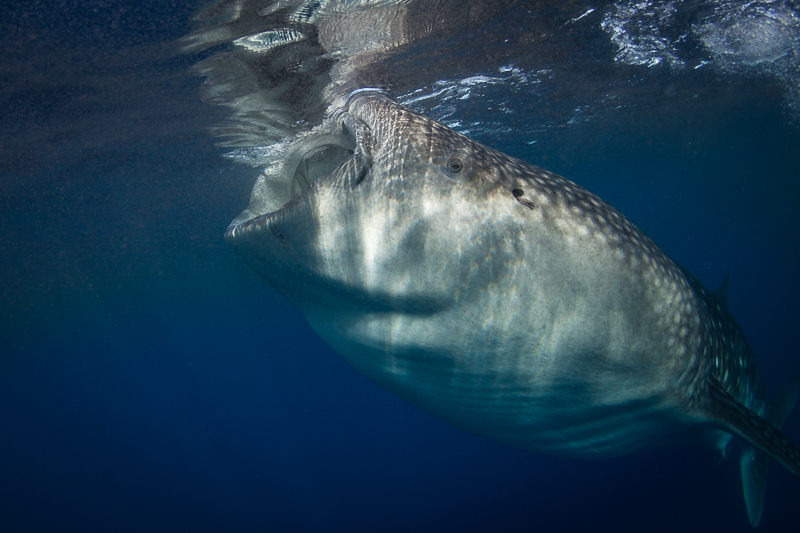Form and Function
Rhincodon typus is known to grow up to 10m-20m total in length.
It is the biggest
known fish, and is easily identified by its large flattened
head
and the sequential
design of the white dots on its body. The design of
R.typus is unknown (Colman,
1997). R.typus is
classified
by having very large gill slits covered by a soft
gill cover,
and they also have an erect dorsal fin. R.typus
have 20
unique filtering pads that
serve to filter small
organisms
as a food source instead of teeth (Mota, et al.,
2010).
These pads also have primary and secondary cartilage
vanes that allows water to
flow easily across the pads.
With these unique pads, they filter feed plankton along
the surface of water, going at a steady pace with their
mouth open to get as many
nutrients as they can. Along
with the number of openings, R.typus have a separate
upper and lower jaw, and is capable of protrusion.
Protrusion is the act of sticng out
or something that sticks out
(Merriam-Webster).
They have a terminal mouth,
having a mouth located on the anterior
side of the
organisms head. This allows for
them to keep their mouth open to
retrieve plankton
while they are near the surface
for feeding.
Different means of filter feeding by whale sharks have been
observed over the
years. Whale sharks can be spotted feeding while holding themselves
in an upright
position keeping their mouths open and allowing
the fish to swim inside. Another
observation of
feeding technique reveals a more active side of
these creatures. In
some cases, the sharks will
actively
feed while they swim, mouth open,
on the
surface of water (Colman,
1997) . Being at the
surface during
the
daytime for man
to see is rare for
the whale shark,
since they tend to
only come up to
the surface during
the night.This
active, surface
level
feeding is rarer
compared to the
other ways.
Continue Learning? Go on to Reproduction!
Or return Home?

